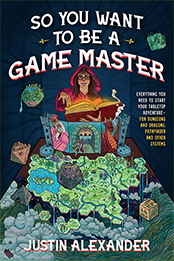 IN THE SHADOW OF THE SPIRE
IN THE SHADOW OF THE SPIRE
SESSION 46A: AMONG MADMEN
December 22nd, 2009
The 25th Day of Kadal in the 790th Year of the Seyrunian Dynasty

It was mid-afternoon when they left the Necropolis.
“Should we head back to the Ghostly Minstrel or go straight to Mahdoth’s?” Elestra asked.
“Ghostly Minstrel,” Ranthir said. “We need to clean up. Besides, we still have several hours. And the Minstrel is on the way in any case.”
Agnarr grunted. “You need to clean up?”
Ranthir rolled his eyes. “Yes. I seem to be covered in some sort of black ooze. I wonder where it came from? Oh, right! My eyes and my mouth!”
THE BIG PLAN
Once they reached the Ghostly Minstrel they spent a few minutes cleaning up and then gathered back up for a planning session.
Their biggest concern was Mahdoth himself. They knew he was connected with both Wuntad and the Pactlords, which made him an obvious threat. And Ranthir knew enough about beholders from his studies in Isiltur to make them all worried: Eyestalks causing paralysis, searing pain, and even death, combined with a massive antimagic field emanating from its central eye that could unknit their strongest offensive weapons.
They laid out extensive contingency plans for dealing with the various eyestalks – restorative magicks, scrolls to re-enervate their flesh, various potions and enchantments to boost their natural resistances against its powers, and much more of the like. It would be expensive, but it was obviously a necessary expense.
“The ultimate problem, though,” Tor said, “Is that all of these precautions are magical. As soon as he puts the big eye on us, it all becomes useless.”
“We do have some non-magical solutions,” Ranthir said, pulling out the alchemical potions of questionable provenance they’d recovered from Ghul’s Labyrinth. “Who wants to go blind?”
“Do we know if his eyestalks will work in his own antimagic field?” Nasira asked.
“I don’t know,” Ranthir confessed.
“Then we should assume they do.” Tee grimaced.
“It doesn’t seem fair,” Elestra said.
From memory they sketched out a small map of the areas they had seen last time they had been at Mahdoth’s. But the truth was they had no idea how extensive the asylum complex was or how deep it might go beneath the streets of Ptolus.
To supplement their limited knowledge they considered using clairvoyance spells again, but they were concerned that defensive measures at the asylum might be triggered by their use.
Elestra tried to figure out how they could use her homunculi’s ability to pass seamlessly through earth and stone to scout out the complex, but since it was incapable of communicating anything of detail back to her that seemed for naught. Nasira, on the other hand, mentioned the possibility of scrying, but the limitations of the techniques available to her made it seem of little use, as well, until Ranthir combined the two plans: By affixing the scrying sensor to Elestra’s homunculi, Nasira would be able to watch the homunculi’s progress.
INFILTRATION BY FIRE
Eventually, feeling as prepared as they could perhaps hope for, they headed for Mahdoth’s around 9 pm.
On the way, however, they had time for further debate: Did they want to wait for the shipment to arrive and then ambush it? Or should they assault the compound immediately so that they wouldn’t have to fight both the asylum personnel and whoever came for the shipment at the same time?
“I think it’s six of one or half a dozen of the other,” Elestra said.
“I’ll take the six to one,” Agnarr said. “I like those odds.”
They all stared at him for a long moment.
“What?”
They settled on the immediate attack, which naturally opened the question of what their specific approach should be. They considered drilling down from street level into the staircase they knew led to the lower level (and which passed beneath the street). They also reopened the practicality of sending Elestra’s homunculi to scout (and, if so, where and when and how he should carry out the scouting).
Keeping the homunculi as an option, Elestra wrapped them in the camouflage of the city’s spirit. Keeping this camouflage-connection through physical proximity, they strung themselves out in a daisy-chain to allow Tee to get close enough to the building to scout the perimeter.
Through the simple expedient of looking through the windows, Tee confirmed that the street-level portion of the asylum (like the tip of the iceberg above its lower levels) was largely abandoned: Only Zairic – the halfling who had ratted them out to Mahdoth when they had come here at Danneth’s invitation – was to be found there, reading a book in a salon-like area towards the rear of the building.
Zairic looked like an easy target. Tee eased open a window at the opposite end of the room, carefully lowered her longbow into place, and… FIRED!
At the last possible moment, Zairic twisted aside so that the arrow lodged in his shoulder instead of his heart. Letting his book drop to the floor, Zairic vaulted over the high arm of his chair and jumped for cover. In mid-leap, he released a fireball through the window. Tee ducked down as the fiery inciting pellet passed over her head and avoided the brunt of it almost completely, but Elestra (standing in the open further down the alley) was caught by the edge of it.
Most of the others – clumped together across the street and still debating how they could (or would or should) use Elestra’s homunculi – missed the flash of the fireball. Fortunately, Ranthir – who was providing the daisy-chained camouflage near the mouth of the alley – recognized it for what it was. “Fireball!” he shouted, hurrying into the alley.
Zairic called out from behind the chair. “Who are you? Do you know who you anger tonight?!”
Tee didn’t bother to answer him. She vaulted herself through the window and skipped across the room, loosing another arrow that thumped into the high back of the chair.
Zairic wrenched her first arrow out of his shoulder, gulped down a healing potion, and made a break for the door. Elestra, cursing the burns from the fireball, threw open another window to the room and fired her dragon rifle at him. The blast missed narrowly, scorching the wall.
Zairic, in mid-stride, ripped a scroll from an inside pocket of his cloak and gestured through the window towards Elestra. The others were just arriving at her side, and they were all caught in a pounding, painful hail of dagger-like ice that plunged down from the sky.
Tee, deciding to fight ice with fire, dipped her hand into her bag of flames and hurled a fire elemental at the Halfling. Distracted by the fiery sprite, Zairic made an easy target for her as she plunged her dagger into his shoulder and re-opened the magically healed wound from her arrow.
Zairic cursed loudly. Wrenching himself free from her blade he cast another spell, sending his body into a rapid, cascading shift between reality and the Ethereal Plane. “You’ll die tonight!”
“You’re the only one dying tonight!” Tee shouted. “We’re happy to speak with the dead!” Her expert eyes were tracking his skittering, shifting, flickering form.
“I’ll speak with your corp—“
The halfling gurgled and collapsed. Tee’s arcing blade had ripped through half his neck. As his body fell forward, his head fell back upon a flap of flesh and landed upright on his back.
“That’s disgusting,” Elestra said, climbing through the window.
Running the Campaign: Ex Post Facto Roleplaying – Campaign Journal: Session 46B
In the Shadow of the Spire: Index

















